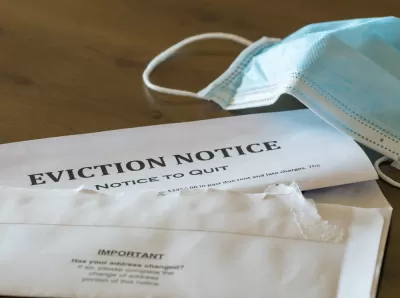With the eviction moratorium set to expire soon, states and localities must do more to streamline the application process and get federal assistance dollars into the hands of renters facing eviction.

The Urban Institute's Mary K. Cunningham, Kathryn Reynolds, and Christopher Davis assess the rate of distribution for federal rental assistance dollars, providing some recommendations for states and cities to streamline their processes and get rental assistance to those who need it most. "Assuming the Treasury maintains its May 2021 distribution rate (5,153 households per day), it would take 627 days, or about 21 months, to reach all 3.2 million renters who believe they will be evicted."
"The eviction moratorium expires in 17 days, and although some jurisdictions are ensuring that no one is evicted without first exhausting emergency relief options, most jurisdictions don’t have these stopgaps. Even the ones that do have these stopgaps still need to figure out the logistics of getting relief funds to renters." Additionally, "[m]any state and local jurisdictions didn’t have rental assistance programs before the pandemic, often because there wasn’t robust federal funding to meet the need."
The authors write that despite encouragement from the Treasury to simplify the application process, "most states and localities are not allowing for self-attestation for income, housing instability, and lease or proof of tenancy." They offer three proposed methods for streamlining the process:
- "Knock on doors to reach out to those eligible."
- "Allow for self-attestation for all eligibility requirements," as federal programs do.
- "Provide rental assistance in the courts through eviction diversion programs," which should include "case management and housing navigation services which can also be funded using emergency relief dollars."
FULL STORY: Three Ways States and Localities Can Get Rental Assistance to People Faster

Planetizen Federal Action Tracker
A weekly monitor of how Trump’s orders and actions are impacting planners and planning in America.

Chicago’s Ghost Rails
Just beneath the surface of the modern city lie the remnants of its expansive early 20th-century streetcar system.

San Antonio and Austin are Fusing Into one Massive Megaregion
The region spanning the two central Texas cities is growing fast, posing challenges for local infrastructure and water supplies.

Since Zion's Shuttles Went Electric “The Smog is Gone”
Visitors to Zion National Park can enjoy the canyon via the nation’s first fully electric park shuttle system.

Trump Distributing DOT Safety Funds at 1/10 Rate of Biden
Funds for Safe Streets and other transportation safety and equity programs are being held up by administrative reviews and conflicts with the Trump administration’s priorities.

German Cities Subsidize Taxis for Women Amid Wave of Violence
Free or low-cost taxi rides can help women navigate cities more safely, but critics say the programs don't address the root causes of violence against women.
Urban Design for Planners 1: Software Tools
This six-course series explores essential urban design concepts using open source software and equips planners with the tools they need to participate fully in the urban design process.
Planning for Universal Design
Learn the tools for implementing Universal Design in planning regulations.
planning NEXT
Appalachian Highlands Housing Partners
Mpact (founded as Rail~Volution)
City of Camden Redevelopment Agency
City of Astoria
City of Portland
City of Laramie





























